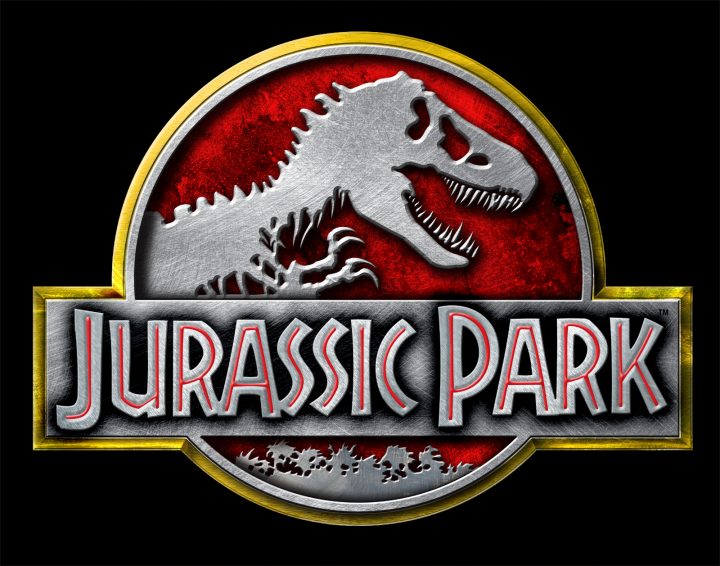
On the train with Netflix viewing again, Friday night I fired up “Jurassic Park” on Netflix. Released originally in 1993, it was the first movie I recall with this much immersive CGI effects. I did see it originally in the theaters, and I recall being wowed by the cinematography.
The Premise
 A wealthy “Showman”, John Hammond (played by the amazing Sir Richard Attenborough) undertakes a massive program to bring the dinosaurs back to life for a modern safari park on an island off the coast of Costa Rica (in reality, the filming was done on Kauai). By extracting DNA from fossilized mosquitos in amber, enough DNA was recovered to allow the genetic engineers of the fictional InGen corporation to piece together whole DNA strands to then create the embryos of the recreated dinosaurs (more on this later in the review).
A wealthy “Showman”, John Hammond (played by the amazing Sir Richard Attenborough) undertakes a massive program to bring the dinosaurs back to life for a modern safari park on an island off the coast of Costa Rica (in reality, the filming was done on Kauai). By extracting DNA from fossilized mosquitos in amber, enough DNA was recovered to allow the genetic engineers of the fictional InGen corporation to piece together whole DNA strands to then create the embryos of the recreated dinosaurs (more on this later in the review).
From there the embryos were implanted in ostrich or emu eggs, and carefully hatched.
After some early weaning, the dinosaurs were then placed in fenced in pens in the safari park, and a thematic ride based tour built around it.
The beginning of the movie shows a botched handling of a dinosaur being added to a caged realm (we aren’t told what it is at this stage, but it is a Velociraptor) when SHTF, and one of the handlers is killed, the board of InGen orders a review of the soundness of the business plan.
Brought in are two paleontologists, Dr. Steading (Laura Dern), and Dr. Grant (Sam Neil), and a “Chaotician” played by Jeff Goldblum.
Where it all started to go bad
One of the contractors for the building of the park, a computer wizzard named Nedry (played by Wayne Knight, or the Newman from Seinfeld) is disgruntled that he underbid, and is working to smuggle out 15 dino embryos to a competitive company.
To accomplish this feat, he needs to disable the safety mechanisms, and beat a hasty retreat to the dock in time to hand the “package” to an intermediary.
Of course, when you are working to constrain some of the mightiest apex predators that ever existed (T. Rex being an example), losing control is a very bad thing indeed.
How it all ended
Not to get into gritty details, plenty of people die, first and foremost the blood sucking lawyer, Genarro, who is caught on the commode by one really pissed off Tyrannosaurus Rex, and Nedry whose nerd-like dominance of technology and computers doesn’t translate into prowess sneaking around to steal other’s intellectual work.
The kids (grandchildren of John Hammond) survive, as do the three scientists, and John Hammond himself.
The hard to believe parts
First, the concept that DNA from more than 65 million years ago can be revived. A good story, just not really possible. From a published article in Nature DNA appears to have a half life of 521 years. That means that recovering 65 million year old DNA is just not possible, and in fact that the oldest genome sequenced is an ancestor of the modern horse from 700,000 years ago. That leaves us 2 orders of magnitude away from even the last of the mighty reptiles.
Second, early we are told about the use of amphibian DNA to fill in the gaps from the recovered dino DNA. This leads to the discovery much later that some of the single sexed dinos are able to switch sex and thus procreate. One of the safety mechanisms was the engineering of the dinos to be female (conceptually easier to close, as the X-X chromosome is less work.) One would have to think that the best geneticists in the world (which they would have to be to create Dino’s from 65 million year old DNA) would not know about this biological anomaly of some of the amphibians. Heck, I learnt that back in high school biology in 1979.
Third, having a single point of failure for the park systems. Colossally bad design. Yes, an evil systems person like Nedry could build in some back doors, but for a project of this size, one would expect a team doing the automation work, and enough sensors and failsafes that it would be difficult to achieve the complete cluster f*ck that Nedry did.
Forth, it appears that the paleontologists that were retained as consultants, Dr’s Grant and Steading, had not been consulted during the initial cloning and breeding of the species. This seems to ba a huge plot hole, as proper incubation and habitat creation would seem to be a foundational problem. The environment on Earth today is quite a bit different than from 65 MYA. Oxygen levels, average temperatures, and many other key indicators would need to be addressed for the species to live, let alone thrive. There is no way that at the 11th hour you call in your experts. The statement by Dr. Grant when he is holding the hatchling dino, after finding out that it is a Velociraptor, questioning the sanity of the scientists in bringing that species back is fortelling.
Fifth, what the hell is a “Chaotician”? We are told that Dr. Malcolm is a mathematician that specializes in chaos theory, but what is that specifically? Ironically, apart from John Hammond, he is the only character who is reprised in the sequel “The Lost World”
Summary
23 years after its original release on the big screen, Jurassic Park is still an entertaining watch. Enough action to keep you on the edge of the seat, and (just barely) enough scientific plausibility that you can ignore the “But…’s” and enjoy the tale.
The moral to the story is when Science “Can” do something, the question to ask is “should” we be doing that. At the time of the original movie, there was plenty of ethical discussion about genetic manipulation of the human genome (not sequenced at the time), and the successful cloning of Dolly hadn’t been done yet, there was plenty of back and forth on the ethics of the process.
Still, seeing the T-Rex brutalize that lawyer. Awwww Yeah!
